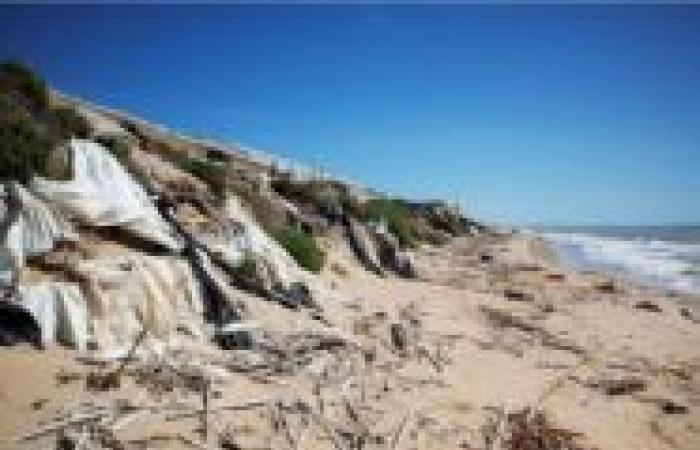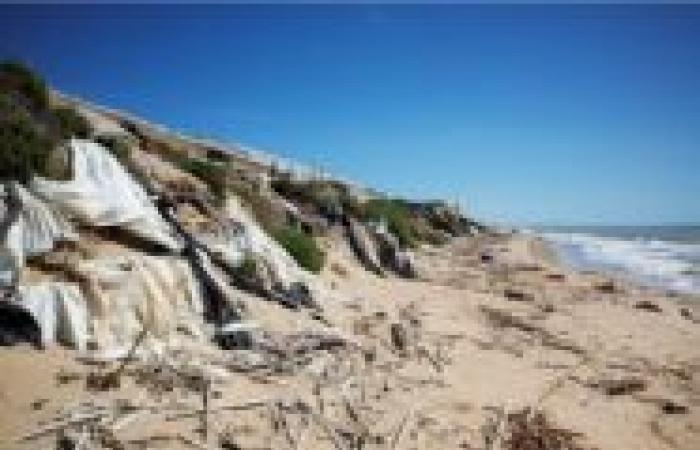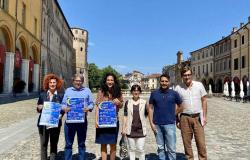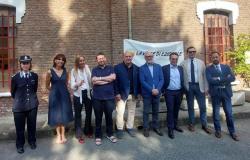We publish a extract of the journalist’s book Alan David Scifo,”If Colapesce got tired“, edited Navarra Publisher. A journey-investigation along the coasts and the Sicilian hinterland which reveals some of the most serious and least known environmental disasters of Italy. A reportage raw and painful that presents the Sicily as land of poisons and which focuses on the (often denied) correlation between environmental damage and illnesses.
***
But where are these? radioactive waste? In the mines of Caltanissetta, in the quarries of Trapani, on the Mediterranean coast from Palermo to Trapani, passing through Porto Empedocle. This is the first question that those who have had a cancer in the family or personally, they arise.
Colapesce saw these wastes as they made their way through the waters until they reached the sea, and perhaps only he will be able to give an answer, because today an answer regarding these wastes has never been given by anyone, as far as Sicily is concerned. Nevertheless, Leonardo Messinaa collaborator of justice who is now free and unavailable, had told the judge Paolo Borsellino, a few days before his assassination in via D’Amelio. He had pointed to the Pasquasìa minewhere he and his construction company worked and where the mafia he put his hands before, during and after the extraction, but nothing appears to have been found there. But perhaps his statement was a false lead; according to those who worked with him, in fact, the waste could be in the mines San Cataldo And Serradifalco. But even there they were never found, or perhaps they were never looked for. Then these wastes could be in sea, in our waters already polluted by multiple factors, by mercury, fuel, right next to that now tired and dejected, almost defeated Colapesce. We don’t know, but we want to know, and in this strange book in which there are more questions than answers, we act as spokespersons for Colapesce, who asks us for help, in the hope that an answer will come to this appeal. Pen and paper, let’s try to solve the puzzle. Also in this case we start from certainties, from data, from what we know: according to a report drawn up by Legambiente in the 2000s, there were 88 sunken ships under suspicious circumstances from the 1970s to 2000. About thirty of these, during the years of the prevailing mafia, mysteriously sank between Sicily and Calabria and on the Mediterranean coasts.
But let’s go back to Sicily: if on Calabria, despite a thousand mysteries that have remained unsolved, we have tried to clarify things, on the island of Colapesce we have never tried to understand if this waste exists, where it is and how much there is. The mafia wasn’t just watching, and in Sicily the route between Trapani, land of the mafia and masonryand Africa, also has several ships sunk mysteriously, even more mysteriously than those sunk in Calabria.
A strange twist of fate, or maybe not: one of these ships is called Silence, like the one that has dominated over the years over the radioactive waste that can be found in our seabed, off the coast of the Mediterranean Sea. The ship sank east of Trapani on 2 November 1982, the day dedicated to the deceased; the crew miraculously survived. The ship was headed to Malta with a load of marble from the Trapani quarries, 198 tons of marble. Are you sure? In fact, not only marble or tuff came out of the Trapani quarries. It’s not just the inhabitants of the towns who always ask themselves: “why does everyone in our area die of cancer?”, but it’s the repentant Pietro Scavuzzo, who confidently states that radioactive waste has been buried among the disused quarries in the area between Marsala and Mazara del Vallo. We are in 1994, and the following ones investigations they don’t allow you to find anything; but the means available were limited and, considering the size of the quarries, a simple Geiger counter was not enough to understand if there were waste in the depths: a check that today, thirty years after those first investigations, with the new technological tools, could provide very different answers. If only it were done. The issue was reported by the former provincial councilor Ignazio Passalacqua and presented to the then Province, but it remained a dead letter. Her intervention was requested by the many families who reported an incidence of tumors above the norm in the territories of Trapani, those territories gutted by uncontrolled abuse of excavations, very often in the hands of mafiosi. Nobody intervened. “Here we die of cancer but we don’t know why.”
They are the same places where people die from the mafia and things could be closely linked. Little is known about the ship Andalusiasunk in the same year off the coast of Pantelleria. She was supposed to transport cement, but nothing further was heard. Two years later, we are in 1984, another ship, the Monte Pellegrinosank on 8 October off the coast of San Vito Lo Capo, after leaving Porto Empedocle in the direction of Palermo. She was classified as a vessel used for the transport of chemicals or pumice. No information. But the crew was safe and sound, by a miracle. Porto Empedocle it has always had a close relationship with the mines: the sulfur and potassium salts that were extracted between the provinces of Agrigento and Caltanissetta passed through there. In the years when even the mafiosi had their hands in the mines.
To date we have no answers and, the more time passes, the more difficult it seems to find them. However, we have cases of cancer, we have cases of malformations and we have investigations which, although they seem to have vanished into thin air, certainly show how the mafia had interests in toxic waste, and how ENEA was not completely transparent; we regretted that they even talked about these wastes. If three clues are proof, we also have too many clues, but despite successive governments, commissions, investigations and interrogations, we are still waiting for answers to that question that arises spontaneously when we caress the hand of a person who with eyes now empty, on the point of death, he seems to ask us why this is happening to him, of dying without answers.







